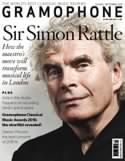Texte paru dans: / Appeared in: |
|
|
Outil de traduction (Très approximatif) |
|
|
Reviewer: Alexandra Coghlan
The Rose Consort of Viols’ first collaboration with mezzo-soprano Clare Wilkinson, the Awards-nominated ‘Adoramus te’ (Deux-Elles, A/14), was a domestic affair, exploring the English repertoire of William Byrd and Peter Philips. Now, in their follow-up disc ‘Mynstrelles with Straunge Sounds’, they broaden their scope to include the music of the continent in works from Josquin, Isaac, Peñalosa and their lesser-known contemporaries. Subtitled ‘The earliest consort music for viols’, the album exposes a nascent repertoire still in the process of finding its textures and techniques – a musical portrait of an entire genre under construction. The variety of responses to this new instrumental phenomenon is striking, ranging from anonymous homophonic dances and simple song accompaniments to elaborate, large-scale chamber works like Alexander Agricola’s Cecus no iudicat de coloribus and Johannes Martini’s La martinella – some of the first examples of true chamber music. Wilkinson’s androgynous, straight tone chafes vividly against the viols – a smooth gloss on a pitted sound that creates necessary variety and beauty in a disc that might easily have been a historical curiosity. National variety in style and character adds further interest, taking us from lively Spanish dances to contemplative melancholy from Josquin.
Anyone familiar with the Rose Consort’s signature soft-grained, dusky sound will be startled by the rougher textures on display here. The ensemble play a set of instruments modelled on those depicted in a 1497 altarpiece from Bologna, and the effect is bright, forward – even brassy at times – a less sophisticated tone than we’re used to, certainly, but also one that mirrors rather evocatively the modal rusticity of many of these works. Rather than blending into a coherent body of sound, the viols each retain an assertive individual voice, allowing the ear to follow the details of part-writing. The results are fascinating, and much closer to a live encounter than a recording.
|
|
|
|
|
|
Cliquez l'un ou l'autre
bouton pour découvrir bien d'autres critiques de CD |
|

/0801918341694.jpg)


